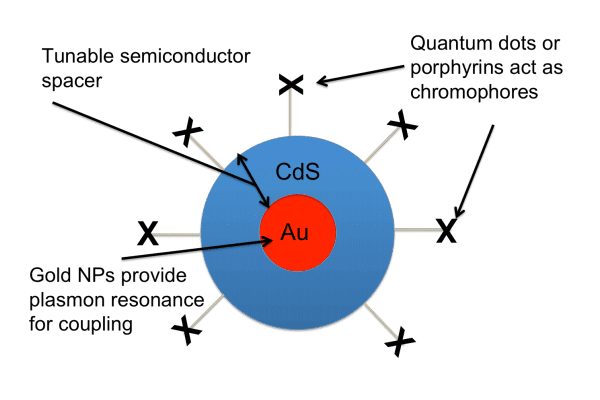Andrew Tobias

Andrew Tobias

Synthesis and Optical Properties of Hybrid Gold Nanoparticles Coupled with Quantum Dots and Porphyrins
Abstract:
Coupling of optically active materials, or chromphores, to plasmonic nanoparticles represents a new research area which has the ability to produce higher efficiency lighting and photovoltaic materials. The main goal of this project was to create novel systems for plasmonic coupling of different chromophores to gold nanoparticles. The plasmonic platforms utilized were gold nanoparticles coated in semiconductor shells of cadmium sulfide or zinc sulfide. The crystalline, semiconductor shell acts as a dielectric spacer to separate the chromophore from the metal surface. Intimate contact to the metal surface may result in increased energy transfer and nonradiative relaxation mechanisms, resulting in shorts for photovoltaic devices and quenching in applications using light emission. Plasmonically enhanced photo-absorbers can be used to boost the collected photocurrent in photovoltaic applications while enhanced fluorescent materials can be used in imaging or display technologies in which bright and stable, solution-state materials are needed. Quantum dos were linked to the nanoparticle surface, via a carbodiimide linking process. The shell thickness of the shell was then altered to optimize the spacing distance needed to maximize the quantum dot radiative rate. Porphyrins were linked to the surface of the semiconductor shell via deprotonated phenyl acid groups, located on the 5,10,15 or 20 positions of tetraphenyl porphyrin. Enhancements in the porphyrin extinction coefficient when bound to the nanoparticles were estimated through analysis of the absorbance spectral changes.
Sponsoring Chair: Dr. Marcus Jones
Committee: Dr. Michael Walter, Dr. Ed Stokes, Dr. Tom Schmedake, Dr. Terry Xu